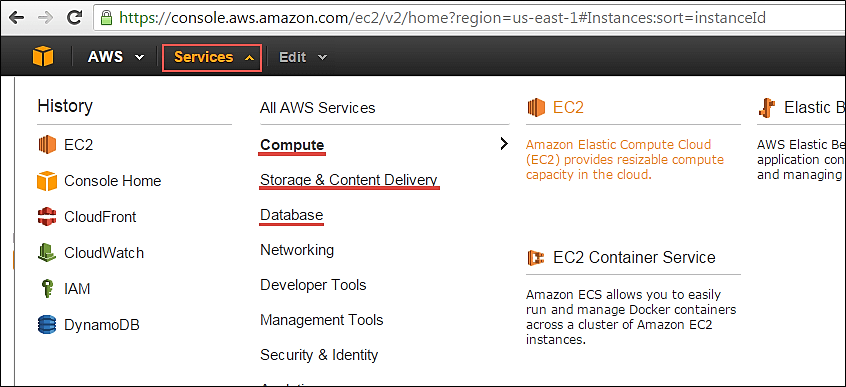APPLIES TO:
Oracle VM - Version 3.0.1 and laterx86_64
GOAL
This document descript how to convert an installed PVM guest to a HVM guest.
An Oracle Linux 6.x PVM guest has PV drivers loaded:
An Oracle Linux 6.x PVM guest has PV drivers loaded:
[root@ol6vm ~]# lsmod | grep xen
xen_netfront 19533 0
xen_blkfront 17065 4
xen_netfront 19533 0
xen_blkfront 17065 4
SOLUTION
1. Append kernel boot argument "xen_emul_unplug=never" in /boot/grub/grub.conf.
Note: This argument is valid under both UEK and RHCK kernels.
Before modification:
[root@ol6vm ~]# grep -v "#" /boot/grub/grub.conf
default=1
timeout=5
splashimage=(hd0,0)/grub/splash.xpm.gz
hiddenmenu
title Oracle Linux Server (2.6.32-279.9.1.el6.x86_64)
root (hd0,0)
kernel /vmlinuz-2.6.32-279.9.1.el6.x86_64 ro root=LABEL=/ SYSFONT=latarcyrheb-sun16 LANG=en_US.UTF-8 KEYTABLE=us numa=off crashkernel=auto
initrd /initramfs-2.6.32-279.9.1.el6.x86_64.img
title Oracle Linux Server (2.6.39-200.32.1.el6uek.x86_64)
root (hd0,0)
kernel /vmlinuz-2.6.39-200.32.1.el6uek.x86_64 ro root=LABEL=/ SYSFONT=latarcyrheb-sun16 LANG=en_US.UTF-8 KEYTABLE=us numa=off
initrd /initramfs-2.6.39-200.32.1.el6uek.x86_64.img
default=1
timeout=5
splashimage=(hd0,0)/grub/splash.xpm.gz
hiddenmenu
title Oracle Linux Server (2.6.32-279.9.1.el6.x86_64)
root (hd0,0)
kernel /vmlinuz-2.6.32-279.9.1.el6.x86_64 ro root=LABEL=/ SYSFONT=latarcyrheb-sun16 LANG=en_US.UTF-8 KEYTABLE=us numa=off crashkernel=auto
initrd /initramfs-2.6.32-279.9.1.el6.x86_64.img
title Oracle Linux Server (2.6.39-200.32.1.el6uek.x86_64)
root (hd0,0)
kernel /vmlinuz-2.6.39-200.32.1.el6uek.x86_64 ro root=LABEL=/ SYSFONT=latarcyrheb-sun16 LANG=en_US.UTF-8 KEYTABLE=us numa=off
initrd /initramfs-2.6.39-200.32.1.el6uek.x86_64.img
After modification (Blod for highlights):
[root@ol6vm ~]# grep -v "#" /boot/grub/grub.conf
default=1
timeout=5
splashimage=(hd0,0)/grub/splash.xpm.gz
hiddenmenu
title Oracle Linux Server (2.6.32-279.9.1.el6.x86_64) HVM
root (hd0,0)
kernel /vmlinuz-2.6.32-279.9.1.el6.x86_64 ro root=LABEL=/ SYSFONT=latarcyrheb-sun16 LANG=en_US.UTF-8 KEYTABLE=us numa=off crashkernel=autoxen_emul_unplug=never
initrd /initramfs-2.6.32-279.9.1.el6.x86_64.img
title Oracle Linux Server (2.6.39-200.32.1.el6uek.x86_64) HVM
root (hd0,0)
kernel /vmlinuz-2.6.39-200.32.1.el6uek.x86_64 ro root=LABEL=/ SYSFONT=latarcyrheb-sun16 LANG=en_US.UTF-8 KEYTABLE=us numa=offxen_emul_unplug=never
initrd /initramfs-2.6.39-200.32.1.el6uek.x86_64.img
default=1
timeout=5
splashimage=(hd0,0)/grub/splash.xpm.gz
hiddenmenu
title Oracle Linux Server (2.6.32-279.9.1.el6.x86_64) HVM
root (hd0,0)
kernel /vmlinuz-2.6.32-279.9.1.el6.x86_64 ro root=LABEL=/ SYSFONT=latarcyrheb-sun16 LANG=en_US.UTF-8 KEYTABLE=us numa=off crashkernel=autoxen_emul_unplug=never
initrd /initramfs-2.6.32-279.9.1.el6.x86_64.img
title Oracle Linux Server (2.6.39-200.32.1.el6uek.x86_64) HVM
root (hd0,0)
kernel /vmlinuz-2.6.39-200.32.1.el6uek.x86_64 ro root=LABEL=/ SYSFONT=latarcyrheb-sun16 LANG=en_US.UTF-8 KEYTABLE=us numa=offxen_emul_unplug=never
initrd /initramfs-2.6.39-200.32.1.el6uek.x86_64.img
2. Shutdown VM guest, update VM guest properties via Oracle VM Manager BUI: Domain Type: Xen PVM to Xen HVM, save changes.
3. Start VM guest and confirm conversion.
i. Kernel argument "xen_emul_unplug=never" is correctly loaded:
[root@ol6vm ~]# cat /proc/cmdline
ro root=LABEL=/ SYSFONT=latarcyrheb-sun16 LANG=en_US.UTF-8 KEYTABLE=us numa=off xen_emul_unplug=never
ro root=LABEL=/ SYSFONT=latarcyrheb-sun16 LANG=en_US.UTF-8 KEYTABLE=us numa=off xen_emul_unplug=never
ii. No "xen_netfront" or "xen_blkfront" loaded:
[root@ol6vm ~]# lsmod | grep xen
[root@ol6vm ~]# lspci
00:00.0 Host bridge: Intel Corporation 440FX - 82441FX PMC [Natoma] (rev 02)
00:01.0 ISA bridge: Intel Corporation 82371SB PIIX3 ISA [Natoma/Triton II]
00:01.1 IDE interface: Intel Corporation 82371SB PIIX3 IDE [Natoma/Triton II]
00:01.3 Bridge: Intel Corporation 82371AB/EB/MB PIIX4 ACPI (rev 01)
00:02.0 VGA compatible controller: Cirrus Logic GD 5446
00:03.0 Unassigned class [ff80]: XenSource, Inc. Xen Platform Device (rev 01)
00:04.0 Ethernet controller: Realtek Semiconductor Co., Ltd. RTL-8139/8139C/8139C+ (rev 20)
[root@ol6vm ~]# lspci
00:00.0 Host bridge: Intel Corporation 440FX - 82441FX PMC [Natoma] (rev 02)
00:01.0 ISA bridge: Intel Corporation 82371SB PIIX3 ISA [Natoma/Triton II]
00:01.1 IDE interface: Intel Corporation 82371SB PIIX3 IDE [Natoma/Triton II]
00:01.3 Bridge: Intel Corporation 82371AB/EB/MB PIIX4 ACPI (rev 01)
00:02.0 VGA compatible controller: Cirrus Logic GD 5446
00:03.0 Unassigned class [ff80]: XenSource, Inc. Xen Platform Device (rev 01)
00:04.0 Ethernet controller: Realtek Semiconductor Co., Ltd. RTL-8139/8139C/8139C+ (rev 20)
iii. DMI table decoder output indicates a HVM domU:
[root@ol6vm ~]# dmidecode | grep -A4 "System Information"
System Information
Manufacturer: Xen
Product Name: HVM domU
Version: 4.3.1OVM
Serial Number: 0004fb00-0006-0000-fb9c-fbc14b9f6b58
System Information
Manufacturer: Xen
Product Name: HVM domU
Version: 4.3.1OVM
Serial Number: 0004fb00-0006-0000-fb9c-fbc14b9f6b58
REFERENCES
NOTE:1606398.1 - Oracle VM 3.x: Oracle Linux 6 guest VM conversion from HVM to PVMNOTE:1664681.1 - How to Initiate a PVM Guest OS Installation in Oracle VM Release 3







